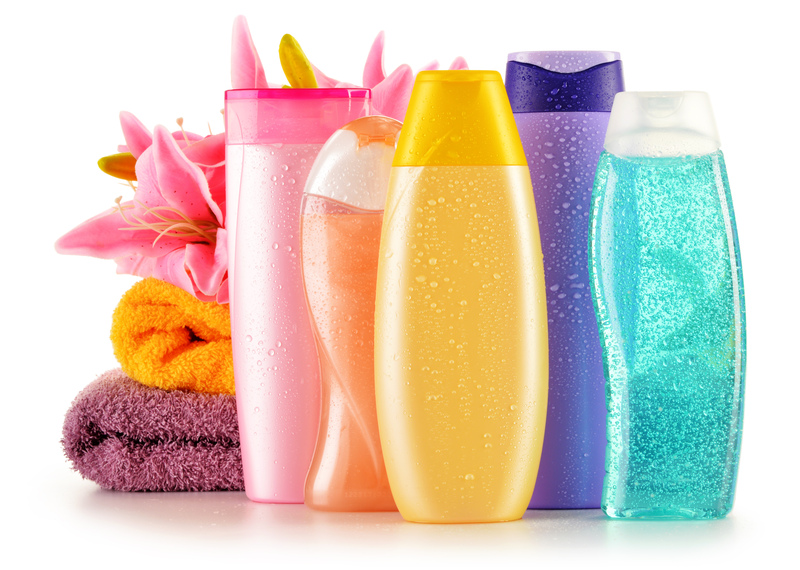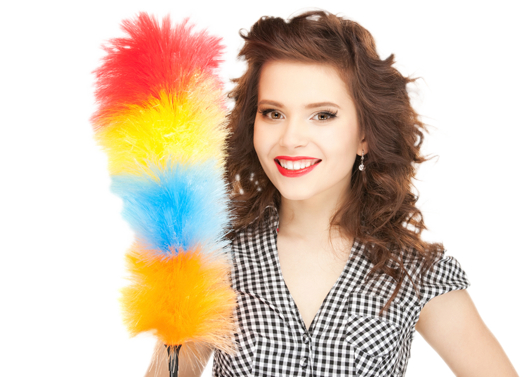The intriguing tale of leather sofas and steam cleaners
Posted on 16/06/2025
The Intriguing Tale of Leather Sofas and Steam Cleaners
Have you ever admired the lush, inviting surface of a leather sofa, only to pause and wonder about the secrets it harbors beneath its sheen? Or perhaps you've heard conflicting advice about using steam cleaners on leather upholstery and found yourself caught between convenience and caution. The journey of leather couches and their relationship to steam cleaning is a fascinating narrative--a blend of material history, evolving cleaning technologies, and modern home care wisdom.

The Timeless Appeal of Leather Sofas
Few home furnishings exude sophistication, comfort, and class quite like a genuine leather sofa. For centuries, leather furniture has been woven into the fabric of interior design, prized for its durability and natural beauty. Let's uncover the compelling reasons behind their sustained popularity--and why they require a unique approach to cleaning and maintenance.
Leather's Rich History in Design
- Ancient Origins: The use of animal hides as seating traces back to antiquity, where leather offered resilience and comfort even in the earliest households.
- Evolution in Craft: Over centuries, tanning processes improved, making leather upholstery softer, stronger, and more visually appealing.
- Modern Status Symbol: In today's homes, a leather couch signals taste and connotes an investment in quality living.
Leather, as a natural material, contains unique grains and characteristics. Each piece tells a story--one that needs careful stewardship should you want it to last for decades.
Why Leather Sofas Stand Out
- Durability: Genuine leather resists wear and develops character with age, unlike its synthetic counterparts.
- Comfort: Leather furniture adapts to room temperature and grows increasingly comfortable with use.
- Easy Maintenance: Properly cared for leather is easier to wipe down than fabric, but correct cleaning methods are critical to avoid damage.
The Quest for Clean: Understanding Steam Cleaning
As modern households strive for deep cleanliness, steam cleaning technology has surged in popularity. The allure is clear: high-heat steam penetrates and lifts dirt, destroys most bacteria, and avoids the need for harsh chemicals. But how does the steam cleaner interact with your treasured leather-upholstered furniture?
Steam Cleaning: How Does It Work?
- Heat + Moisture: Steam cleaners heat water to over 200?F, releasing a fine vapor that loosens stubborn dirt and dissolves grime.
- Sanitization: The high temperature effectively kills bacteria, dust mites, and some allergens--ideal for health-focused homes.
- No Chemical Residue: Steam uses only water, making it an eco-friendly choice for families and pets.
It's no wonder many homeowners consider steam cleaning not only for carpets but for furniture, draperies, and even mattresses. However, when it comes to leather couches, caution is essential.
Leather Sofas Meet Steam Cleaners: A Cautious Intersection
The idea of using a steam cleaner on a leather couch is tempting. What could be easier than a blast of hot vapor to lift dirt and revive your seating? Yet, there's more complexity beneath the surface--and understanding it could mean the difference between a revitalized living room and a costly mistake.
What Happens When You Use a Steam Cleaner on Leather?
- Potential for Moisture Damage: Leather is porous. Excess moisture, especially when combined with high heat, can penetrate, swell, and ultimately warp or crack the leather surface.
- Stripping Protective Oils: The steam may strip away natural oils and leather's protective finish, leaving upholstery dry, brittle, and vulnerable to stains.
- Inconsistent Results: Some steam cleaner manufacturers offer special attachments for leather, but even then, results can vary based on the leather's grade and finish.
In short: While it is technically possible to use certain steam cleaning methods on leather furniture, it is generally not recommended unless specifically advised by the sofa or cleaner's manufacturer.
The Science of Cleaning Leather Sofas
What Makes Leather So Special?
Leather is an organic material made primarily of collagen fibers. Its natural oils provide flexibility and resilience, but these same oils can be disrupted by improper cleaning. Over-exposure to water, steam, or harsh detergents interrupts the delicate balance, leading to:
- Dried-out, stiff leather
- Permanent spotting or marks
- Mildew or mold from trapped moisture
Thus, the best ways to clean a leather couch prioritize gentle techniques that preserve oils, avoid over-wetting, and respect the integrity of the surface.
Recommended Cleaning Methods for Leather Sofas
- Regular Dusting: Use a soft, dry microfiber cloth for weekly dust removal without abrasion.
- Spot Cleaning: For small marks, use distilled water or a leather-specific cleaner applied to a cloth, never directly to the sofa.
- Professional Leather Cleaning: Occasionally, schedule a visit from a certified leather technician who will assess the specific type and finish of your furniture.
- Conditioning: Every six months, use a dedicated leather conditioner to nourish fibers and restore the protective barrier against stains and moisture.
Pro Tip: Always check with the furniture manufacturer or retailer for specific care instructions relating to your leather couch or armchair.
Steam Cleaners vs. Leather Sofas: The Myths & The Facts
The Most Common Myths
-
Myth 1: All leather furniture can be safely steam cleaned.
Fact: Most leather types (full-grain, top-grain, bonded) can be damaged by steam. Only some treated leathers or faux leathers may tolerate gentle steam. -
Myth 2: Steam cleaning is the best way to refresh a musty leather sofa.
Fact: Leather requires gentle air drying, not moisture. Steam may worsen mold or mildew issues if the sofa isn't dried thoroughly. -
Myth 3: Steam removes all stains and odors from leather couches.
Fact: Some stains are oil-based and will resist water or steam. Odors can sink deeply into the padding and may not be affected by steam cleaning.
Tips for Safe Cleaning of Leather Sofas
If You Must Use a Steam Cleaner:
- Avoid direct, prolonged application; use a low-heat, low-moisture handheld steamer and keep the nozzle moving.
- Work in small sections, wiping immediately with a clean dry cloth to prevent saturated areas.
- Test a hidden area first for colorfastness and finish stability.
- Never steam suede, nubuck, or untreated full-grain leather. These types of leather are highly sensitive to moisture and heat.
- Afterward, apply a leather conditioner to replace lost oils.
What the Professionals Recommend
- Routine care keeps your leather sofa looking pristine far longer than deep cleaning does.
- Professional leather cleaning every 12-18 months is a solid investment for expensive furniture.
- Address spills and stains immediately--leather is more forgiving when messes are treated without delay.
Alternative Deep Cleaning Solutions for Leather Sofas
The Modern Homeowner's Toolkit
- Leather Cleaning Wipes: Formulated for daily touch-ups without moisture damage.
- Neutral pH Leather Soaps: Gently remove embedded dirt without risking discoloration.
- Specialized Leather Conditioners: Restore luster and prevent drying/cracking.
- Soft Brushes: Use for nubuck or aniline leathers--never with excessive water or steam.
Remember: Every leather sofa is unique. What works for one may spell disaster for another. Always test new products or techniques on a hidden area, and avoid home remedies with vinegar, baking soda, or harsh soaps unless specifically recommended.
Choosing The Right Steam Cleaner for Furniture
Types of Steam Cleaners
- Handheld Steamers: Portable and convenient for light jobs, but can be dangerous in untrained hands.
- Canister Steam Cleaners: Offer more attachments and adjustability, but also higher risk if the wrong settings are used on leather.
- Upholstery Steam Cleaners: Some advanced models feature "leather-safe" modes--always confirm with the manufacturer.
Features to Look For
- Adjustable temperature controls
- Low-moisture settings
- Specialized upholstery attachments
- Reputable brand support and clear usage instructions for leather surfaces
If in doubt, consult with a professional upholstery cleaner before using any new device on your leather furniture.

Real Stories: What Homeowners Say
Many have succumbed to the allure of a fast, deep-cleaned leather couch--only to regret the outcome. In online forums and advice columns, stories abound:
- Katie from Chicago: "I tried using my new steam mop on an older leather chair. Within hours, it had dried into a patchy, cracked mess. Wish I'd just used a cloth and some conditioner!"
- Oliver from Dallas: "The steam cleaner was great on the armrest but left water rings after cooling down; I had to pay for pro restoration services."
- Sophie from London: "My faux-leather reclining sofa did fine with steam, but my friend's genuine leather settee was ruined! Always check your furniture's care tag."
Conclusion: A Balanced Approach to Leather Sofa Care
The tale of leather sofas and steam cleaners is ultimately a story of moderation and knowledge. While steam cleaning technology offers unparalleled sanitation for many household items, genuine leather sofas require a softer touch. The best route is preventive maintenance, regular gentle cleaning, and occasional expert care. For those moments when a steam cleaner seems tempting, remember: an ounce of caution is worth more than a pound of restoration.
By respecting the nuances of each material, you ensure your leather couch remains an inviting, luxurious focal point in your home for years to come--without the risk of a cleaning mishap that tells its own tale.
Further Reading & Resources
- Leather Magazine - For insight into leather technologies and care tips.
- Good Housekeeping: How to Clean Leather Furniture
- Institute of Inspection Cleaning and Restoration Certification (IICRC) - For professional cleaning standards.
Whether you're a cleaning enthusiast or a proud owner of a leather sofa, understanding the intersection of history, technology, and best practice is the key to a home that's not only spotless but also stylish and safe.




